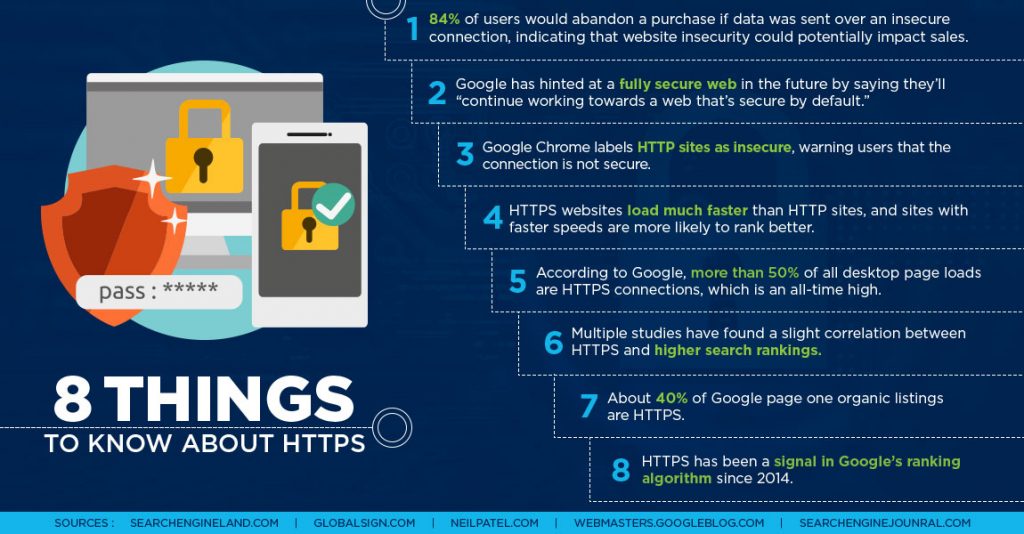
We’ve all been there.
Logging hours of work building a webpage. Carefully crafting content, ensuring that it is both up-to-date and meaningful. Optimizing keywords, images, and links, to create the desired foundational elements. But no matter what we do, it always seems that the site rankings do not respond as we expect. Knowing that there are TENS OF THOUSANDS of searching happening each second, means we know that the potential to grow is there!
So, what have we missed? What about SEO analytics have we not considered? There are two elements you can consider that may make all the difference.
How secure is my website?
It doesn’t seem like the first element one would consider when looking to increase search ranking, but how secure and fast your website are key elements in both returning good rankings through Google’s SEO analytics, as well as keeping users coming back to your website.
HTTPS VS HTTP
A key SEO enhancement that will launch your rankings ahead is to make sure your website is secure through using HTTPS. HTTPS encrypts data of your website, ensuring that it is not changed or corrupted as it is transmitted. By switching from HTTP to HTTPS, not only do you provide a more safe and secure experience for your site visitors, but you also ensure Google includes that factor in your SEO Ranking and provide more accurate data on referral traffic to Google Analytics. Truly there is no disadvantage to taking the time to make the switch.

How fast is my page load speed?
There is nothing worse than going to a webpage and waiting for it to load. And waiting… And waiting. The truth is, the longer the load time the higher the bounce rate. An often overlooked aspect of SEO ranking analytics is the speed of a website. As a person creating a website, content is often the focus, however, the browsing experience response time of a website is key to keeping visitors engaged. Since 2010, Google has used site load speed as a factor in SEO ranking, and for most website visitors, the difference between a two and three second load time determines whether they will ever return to your site.
So know your speed and optimize it! Regularly checking page load speeds using online tools such as Google’s Pagespeed Insights, is an excellent place to start. Review the page elements to ensure that are adding load time. Enable browser caching so that repeat visitors experience faster load times. Reduce plugins to those truly contribute to the content value of your site. Remember that technical elements, while interesting and innovative, can also hurt more than help. As you explore that the new website integration, be sure to weigh each elements value against the performance of the page as a whole. And while you’re at it,
https://www.bluecorona.com/blog/google-ranking-factors-2018
https://www.bluecorona.com/blog/https-and-seo

